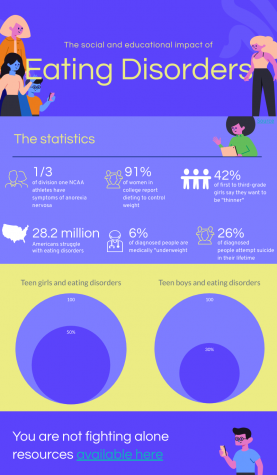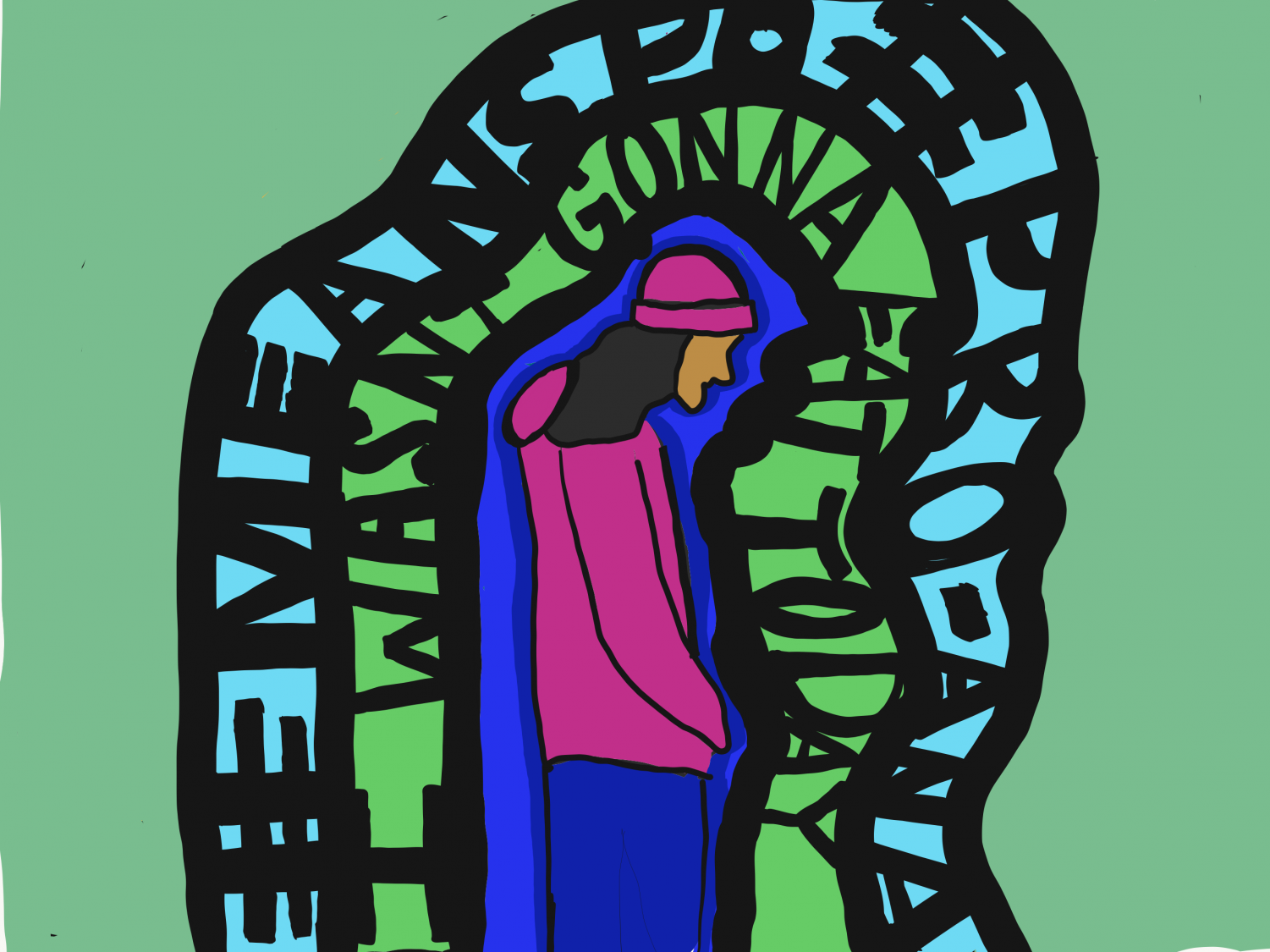Your donation will support the student journalists of West High School. Your contribution will allow us to purchase Scholarship Yearbooks, newsroom equipment and cover our annual website hosting costs.
A social disorder
Students of West High share the social hardships of an eating disorder and what the community can do to support and help those struggling.
December 31, 2021
Looking down at a scale and feeling your heart drop is a common feeling among teenagers in 2021. Small Waist in Twenty Days challenges is plastered across every screen in the nation. The bone structure of girls’ hips is suddenly able to change in just two minutes on youtube. “Bod” is the desired comment on every girl’s Instagram post.
As some people know, teenagers don’t have it easy on social media. If they show off their body, “they try too hard.” If it stays hidden, they are insecure. When a woman shows any sexuality, she’s asking for it. If a man is wearing grey sweatpants, “he knows what he’s doing”. With a social life so focused on people’s bodies, we never stood a chance.
Content Warning: This article contains information pertaining to eating disorders and other harmful mental health issues.
Social Media
With over one billion users, TikTok is now a household name. The ability to blow up overnight and spread information at lightning speed is now in every person’s hands. In March of 2020, the world went into lockdown and teenagers’ lives have never been the same. With a wave of new trends and way too much time on some people’s hands, this not only worsened many women’s body issues but even sparked a fire in some teenagers’ minds that their body was not “enough”.
#Meanspo (meaning mean inspiration) was trending on the social media app for a while. This “trend” took inspiration from Tumblr’s popular term “thinspo” which was coined in the early 2000s. Thin inspiration would show peoples weights and some would publicly say they are “pro-ana” meaning pro-anorexia. Tumblr made efforts to lessen the impact of this trend, but the damage had already been done. In 2012, the look these girls were going for was visible bones and showing their sickness to the world as a gold medal. With a respawn of these trends, social media threatens to once again hurt many teenagers’ lives.
Some trends are not as straightforward though, most are hidden under a blanket of “health”. What I eat in a Day was trending on multiple social media platforms right before the summer of 2021. Many were showing how people got their “summer bodies.” and while many people meant well, this can be damaging when not done correctly. By showing low-calorie intake that is not enough for even a toddler, hurtful habits can be normalized and even flourish.
These posts can pop up on anyone’s For You Page and permanently damage the viewer. The dangers of social media and eating disorders are outreach. At any time, someone in Iowa can reach almost anyone in the world. Although this can be amazing, it can also be detrimental to teenagers’ social growth.
Social Impacts
Even if it does not feel like it, the issues caused by social media present themselves in real life in scary ways. “I haven’t eaten today” can be heard in the halls at school and be considered a relatable topic among teens. “I only drank coffee today” after a long school day is a success for some students.
A common but not spoken about symptom of eating disorders is exhaustion. Due to the malnutrition of your body, there is not enough energy for your body to operate properly. This leads to exhaustion and can hurt a teenager’s mental and social wellbeing.

Simple things like getting out of bed in the morning can be near impossible for people struggling with eating disorders. Malnutrition is an issue that impacts 17 million children a year in America alone, and this can lead to being tired constantly.
Exhaustion can lead to lower grades and a worse social life. ” I didn’t want to hang out with friends, I was just so exhausted,” says an anonymous student. A social impact that many people overlook is losing friends.
Hair loss, bone/muscle loss, and even becoming infertile can be long-lasting physical symptoms of eating disorders. But, this sickness reaches every single part of a person’s life in scary ways.
“I would skip wonderful opportunities just to torture my body,” says Papke. This feeling is common among many teens who struggle with eating disorders. Skipping dinner with friends because they would know if you’re not eating. Being too exhausted to perform well in school or sports. All of these hypothetical scenarios are people with eating disorders in everyday life.
My Story
In the summer of 2020, I would brush my hair and see the blond strands land on my brush after one simple swipe. Hair loss was something I had never experienced or thought I would experience. My hair that had once been so thick and curly was falling out, a small thing that brought me so much sadness.
A secret not so well kept but left unacknowledged stayed with me for months until I reached out for help. Therapy was the last thing I wanted to be doing at noon on a Tuesday every week but I dealt. I didn’t believe I had an issue, but my parents wanted me to be there and I didn’t want to let them down.
The growl of my stomach was a sign, not one of hunger but one of success. I knew I was doing well when I felt like garbage. I was tired and quiet, people liked that. I had the most friends I had ever had but still felt the most alone.
The spring turned to summer, in a sea of swimsuits and crop tops I finally felt secure in my body. The curves I had once had flattened into one straight line all around my body. I told myself I looked amazing, but I look back now and cringe. The ribcage that popped out in that one Instagram post that I saw as a win. I was so sick, every single day was a struggle.
In the fall, I was alone again. Any feeling of normal that came with the summer days and seeing my friends withered away with the leaves on the trees. Covid was raging worse than ever and I was home. Home with my thoughts, I got medicated then, and it is still one of the best decisions I have ever made.
The idea of ever being open about anything having to do with my mental health or eating disorder was so foreign to me. I could not acknowledge my issue to myself, forget about my friends or family. But, when I spoke about my experience I realized I was not alone. I realized so many people silently struggled the same way I did. I’ll never forget the feeling I felt the day I posted my Instagram post, I was finally free.
The support I got that day made me feel less alone. If the support shown to me could be given to all the people, these hard conversations would be a bit easier.
A Missed Connection
So what can a person do to start conversations about eating disorders? Well, the first thing they can do is not normalize them. “I haven’t eaten today”, can do so much damage to someone just trying to get better. Especially with social media trends, do not bring up rapid/unhealthy weight loss or gain nor romanticize illness.
Finally, understand that someone does not choose to have an eating disorder. Although all motives and lives are different one thing is shared, sickness. An eating disorder is a silent killer and you can be saved. Resources are featured in the infographic linked here.

